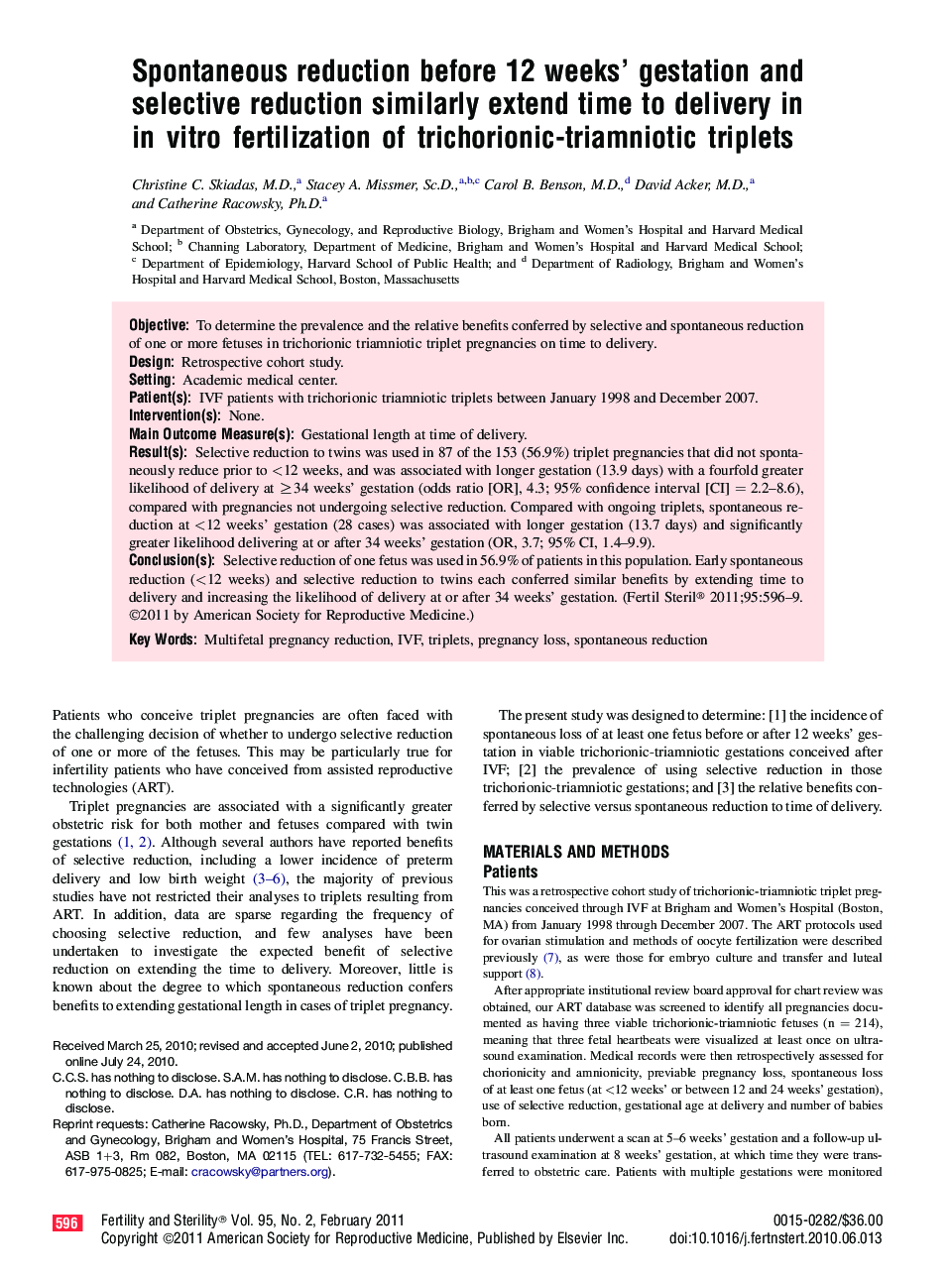| Article ID | Journal | Published Year | Pages | File Type |
|---|---|---|---|---|
| 3939549 | Fertility and Sterility | 2011 | 4 Pages |
ObjectiveTo determine the prevalence and the relative benefits conferred by selective and spontaneous reduction of one or more fetuses in trichorionic triamniotic triplet pregnancies on time to delivery.DesignRetrospective cohort study.SettingAcademic medical center.Patient(s)IVF patients with trichorionic triamniotic triplets between January 1998 and December 2007.Intervention(s)None.Main Outcome Measure(s)Gestational length at time of delivery.Result(s)Selective reduction to twins was used in 87 of the 153 (56.9%) triplet pregnancies that did not spontaneously reduce prior to <12 weeks, and was associated with longer gestation (13.9 days) with a fourfold greater likelihood of delivery at ≥34 weeks' gestation (odds ratio [OR], 4.3; 95% confidence interval [CI] = 2.2–8.6), compared with pregnancies not undergoing selective reduction. Compared with ongoing triplets, spontaneous reduction at <12 weeks' gestation (28 cases) was associated with longer gestation (13.7 days) and significantly greater likelihood delivering at or after 34 weeks' gestation (OR, 3.7; 95% CI, 1.4–9.9).Conclusion(s)Selective reduction of one fetus was used in 56.9% of patients in this population. Early spontaneous reduction (<12 weeks) and selective reduction to twins each conferred similar benefits by extending time to delivery and increasing the likelihood of delivery at or after 34 weeks' gestation.
